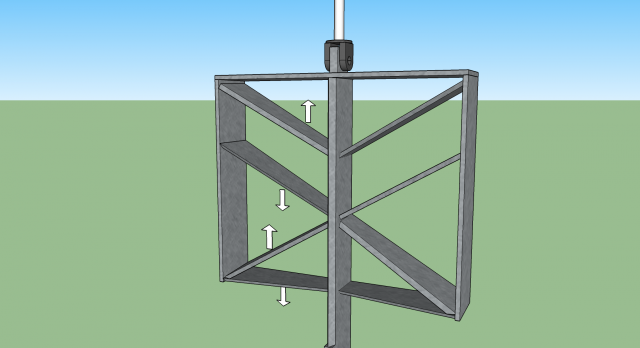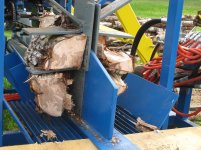Wild Bill the 2nd
Gold Member
Here are the updated renderings

Saw and saw clamp are in place with cylinders at correct locations.
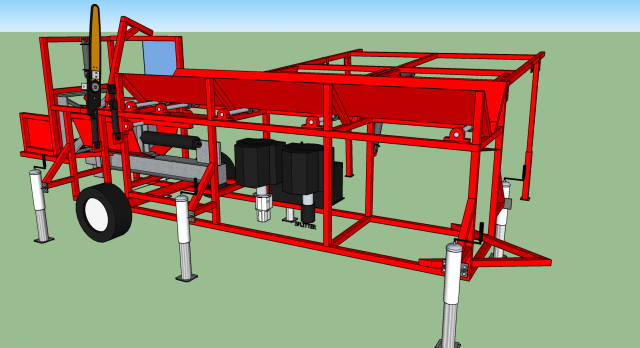
Motors still float, we will address that later...
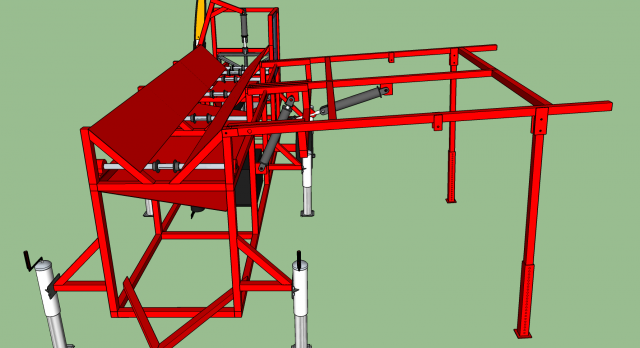
Now using sprockets on the shafts to drive the log down the infeed.
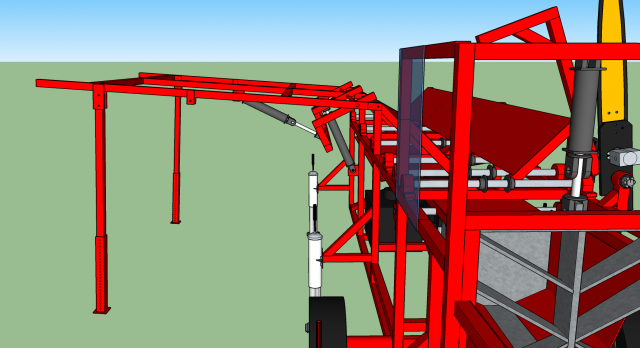
Adjustable pitch on the infeed table with adjustable length legs. Hydraulically actuated stop at the end of the infeed table.
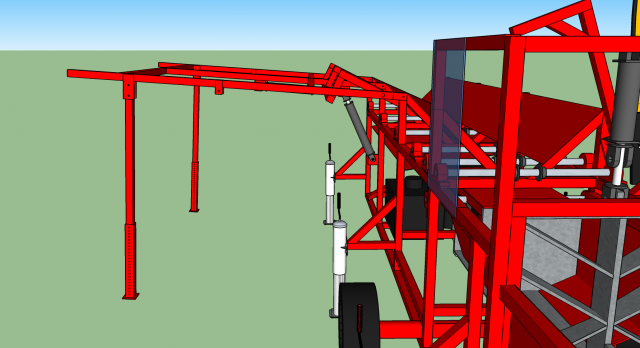
The stop rocks back the other way to assist with loading the log into the infeed trough. It can also be used as a stop in this manor as well.

We boxed in the wedge and did away with the option to split logs 2 ways.

Splitter extended. Note the plate above the ram, this allows a log that is cut while splitting to rest on the plate until the splitter fully retracts.
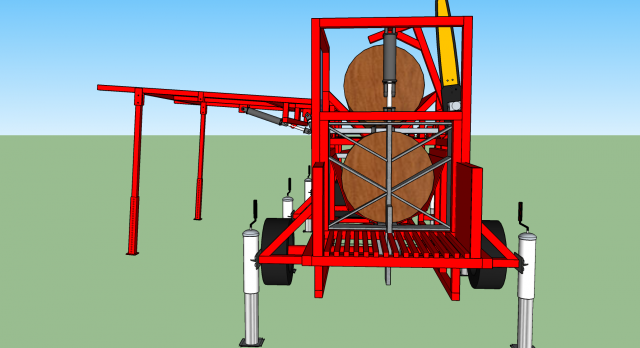
24" log with the 8-way

12" log with the wedge lifted 6" to allow use of 4-way wedge
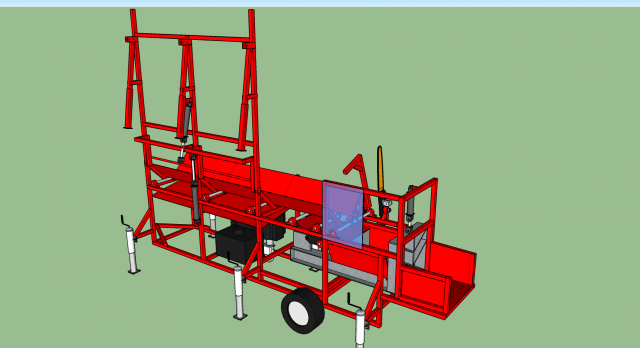
Infeed table lifted for transport
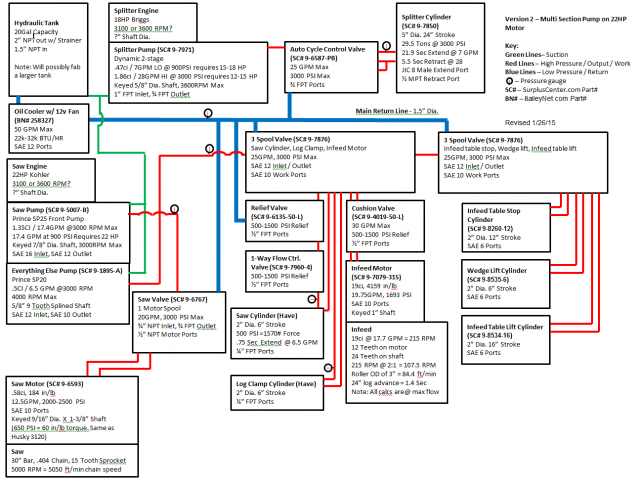
My visualization of the hydraulic system
Ordered most of the hydraulic components today. All except for the hydraulic tank, oil cooler and all the lines pretty much.
Thanks for all the help with the hydraulics!!! I'll still have some questions about tank size vs the oil cooler down the road.

Saw and saw clamp are in place with cylinders at correct locations.

Motors still float, we will address that later...

Now using sprockets on the shafts to drive the log down the infeed.

Adjustable pitch on the infeed table with adjustable length legs. Hydraulically actuated stop at the end of the infeed table.

The stop rocks back the other way to assist with loading the log into the infeed trough. It can also be used as a stop in this manor as well.

We boxed in the wedge and did away with the option to split logs 2 ways.

Splitter extended. Note the plate above the ram, this allows a log that is cut while splitting to rest on the plate until the splitter fully retracts.

24" log with the 8-way

12" log with the wedge lifted 6" to allow use of 4-way wedge

Infeed table lifted for transport

My visualization of the hydraulic system
Ordered most of the hydraulic components today. All except for the hydraulic tank, oil cooler and all the lines pretty much.
Thanks for all the help with the hydraulics!!! I'll still have some questions about tank size vs the oil cooler down the road.
![IMG_20150125_223041[1].jpg IMG_20150125_223041[1].jpg](https://www.tractorbynet.com/forums/data/attachments/376/376470-5d87e3a1e37e42574bb18f033ba84658.jpg)
![IMG_20150121_231012[2].jpg IMG_20150121_231012[2].jpg](https://www.tractorbynet.com/forums/data/attachments/372/372665-2bebd1d8b38037e3d893c9d87f17e755.jpg)

